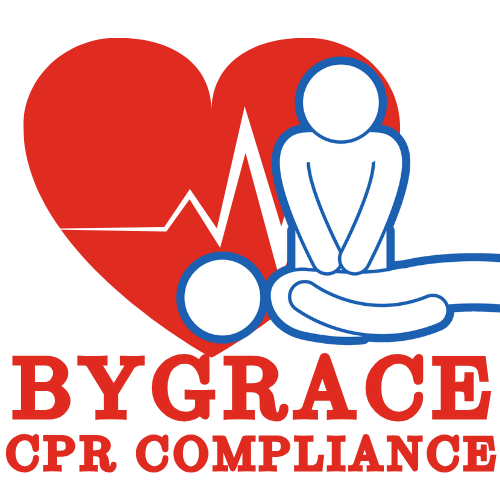
Bronchitis is a condition that causes inflammation in the bronchial tubes, which are the airways that carry air to and from the lungs. There are two main types of bronchitis: acute and chronic. Acute bronchitis is a short-term condition that usually goes away on its own, while chronic bronchitis is a long-term condition that can cause ongoing symptoms.
Bronchitis, a common respiratory condition that can affect individuals of all ages. From the acute to the chronic, we’ll unravel the causes, symptoms, and treatment strategies for this inflammation of the bronchial tubes. Whether you’re seeking knowledge for yourself or aiming to understand a loved one’s health better, join me on this journey to unravel the complexities of bronchitis and empower yourself with insights into its management and care.
Types of Bronchitis
Acute bronchitis is a temporary inflammation of the bronchial tubes, which are the airways that carry air to the lungs. It is a common respiratory condition characterized by coughing, often with the production of mucus, chest discomfort, fatigue, and sometimes a mild fever.
Causes: The primary cause of acute bronchitis is usually viral infections, such as those responsible for the common cold or influenza. However, bacterial infections or exposure to irritants like smoke and air pollution can also trigger this inflammation.
Acute bronchitis is commonly caused by viral infections, with viruses being the primary culprits. The most common viruses associated with acute bronchitis include:
- Influenza viruses: The flu virus can lead to acute bronchitis, causing inflammation in the bronchial tubes.
- Rhinoviruses: These viruses are a frequent cause of the common cold, and they can also trigger acute bronchitis.
- Adenoviruses: Responsible for various respiratory infections, adenoviruses can lead to bronchial inflammation.
- Respiratory syncytial virus (RSV): Common in young children, RSV can cause bronchitis, especially in infants.
It’s important to note that while viruses are the primary cause, bacterial infections or exposure to irritants like smoke, air pollution, or chemical fumes can also contribute to the development of acute bronchitis. However, these instances are less common compared to viral infections.
Symptoms: The hallmark symptom of acute bronchitis is a persistent cough, which can be accompanied by the production of mucus. Chest discomfort, fatigue, and occasionally a mild fever may also be present
Acute bronchitis comes with a set of distinct symptoms that can make their presence known. Here’s a rundown:
- Persistent Cough:
- Nature: Often starts as a dry cough and may progress to produce mucus.
- Duration: The hallmark symptom that can persist for several weeks.
- Chest Discomfort:
- Nature: A sensation of tightness or discomfort in the chest.
- Duration: Can accompany the cough and may vary in intensity.
- Mucus Production:
- Nature: Production of mucus, which may be clear, white, yellowish, or greenish.
- Duration: Common throughout the course of acute bronchitis.
- Fatigue:
- Nature: Feeling tired or lacking in energy.
- Duration: May be present, especially if the body is actively fighting off an infection.
- Mild Fever:
- Nature: Body temperature may rise slightly.
- Duration: Occasional and usually not high-grade.
- Sore Throat:
- Nature: Irritation or discomfort in the throat.
- Duration: Can accompany the initial stages, particularly if a viral infection is involved.
- Shortness of Breath:
- Nature: Difficulty in breathing or catching one’s breath.
- Duration: May occur, especially during physical activity or when the airways are narrowed.
It’s important to note that symptoms can vary from person to person, and while acute bronchitis is generally a self-limiting condition, seeking medical advice is advisable, especially if symptoms are severe, persistent, or if there’s difficulty breathing.
Duration: Unlike its chronic counterpart, acute bronchitis is typically short-lived. It usually lasts for a few weeks, and with proper care, the symptoms gradually subside.
Treatment: Self-care is the mainstay of treatment for acute bronchitis. This includes getting adequate rest, staying hydrated, and using over-the-counter cough suppressants or expectorants to alleviate symptoms. In most cases, the body’s immune system can overcome the viral or bacterial infection causing bronchitis.
While acute bronchitis is generally not a severe condition, seeking medical advice is advisable, especially if symptoms persist or worsen. Understanding the nature of acute bronchitis empowers individuals to manage its symptoms and supports a smoother recovery.
Chronic Bronchitis: Unraveling the Persistent Respiratory Tale
Definition: Chronic bronchitis is a long-term inflammation of the bronchial tubes, a key player in the chronic obstructive pulmonary disease (COPD) spectrum. Unlike its acute counterpart, chronic bronchitis is characterized by persistent cough with mucus production for most days of the month, lasting for at least three months, and recurring for at least two consecutive years.
Causes: The leading role in the chronic bronchitis drama often goes to long-term exposure to irritants, most notably cigarette smoke. Other contributing factors may include air pollution, dust, and workplace exposures.
- Environmental and Occupational Exposures:
- Nature: Exposure to pollutants, dust, fumes, or gases in the workplace or environment.
- Action: Prolonged exposure can contribute to chronic bronchitis.
- Air Pollution:
- Nature: Inhaling air with high levels of pollutants.
- Action: Long-term exposure to air pollution, especially in urban areas, can increase the risk.
- Recurrent Respiratory Infections:
- Nature: Frequent episodes of respiratory infections, especially during childhood.
- Action: Recurrent infections can contribute to chronic bronchitis over time.
- Genetic Factors:
- Nature: Genetic predisposition.
- Action: Some individuals may be genetically more susceptible to developing chronic bronchitis.
- Age and Gender:
- Nature: More common in individuals over 45.
- Action: Age-related changes in the respiratory system may increase susceptibility. Historically, it has been more common in men, but this gap has narrowed due to changes in smoking patterns.
It’s crucial to note that chronic bronchitis is often part of the spectrum of chronic obstructive pulmonary disease (COPD), which also includes emphysema. While smoking is the primary cause, a combination of genetic factors and environmental exposures may contribute to an individual’s risk.
Symptoms: The protagonist, a persistent cough with mucus, takes center stage, accompanied by shortness of breath, wheezing, and fatigue. The recurring nature of these symptoms sets the chronic bronchitis storyline apart from its acute counterpart.
Chronic bronchitis is characterized by persistent symptoms that can affect a person’s daily life. Here are the common symptoms associated with chronic bronchitis:
- Persistent Cough:
- Nature: A chronic cough that produces mucus, lasting for most days of the month.
- Duration: This is a defining feature of chronic bronchitis and continues for at least three months in a year for two consecutive years.
- Excessive Mucus Production:
- Nature: Increased production of mucus, which may be clear, white, yellowish, or greenish.
- Duration: Consistent throughout the course of chronic bronchitis.
- Shortness of Breath:
- Nature: Difficulty in breathing, especially during physical activity.
- Duration: Progressively worsens over time and can become more noticeable as the disease advances.
- Wheezing:
- Nature: A whistling or squeaky sound when breathing.
- Duration: Common, especially during periods of increased respiratory effort.
- Chest Discomfort:
- Nature: A sensation of tightness or discomfort in the chest.
- Duration: Can be a constant or recurring symptom.
- Fatigue:
- Nature: Feeling tired or lacking in energy.
- Duration: Chronic bronchitis can contribute to overall fatigue and reduced stamina.
- Frequent Respiratory Infections:
- Nature: Increased susceptibility to respiratory infections.
- Duration: Recurrent infections may occur due to the compromised respiratory function.
It’s important to note that chronic bronchitis is a progressive condition, and symptoms may worsen over time. Seeking medical attention and proper management is crucial to slow the progression and improve the quality of life for individuals with chronic bronchitis, especially when symptoms are impacting daily activities.
Duration: Unlike the short-lived performance of acute bronchitis, chronic bronchitis is an enduring condition. The symptoms persist over an extended period, requiring ongoing management.
Treatment: The chronic bronchitis script involves a combination of lifestyle changes, medications, and sometimes, supplemental oxygen. Smoking cessation is a critical plot twist, as it not only halts the progression but can also improve symptoms. Medications may include bronchodilators to ease breathing and reduce inflammation.
Seeking medical guidance ensures a tailored approach to managing this condition, allowing individuals to breathe easier and embrace a better quality of life.
Treatment for Bronchitis:
- Rest and Hydration:
- Role: Essential for the body’s healing process.
- Action: Allow ample time for rest, and stay well-hydrated to support the immune system.
- Cough Suppressants and Expectorants:
- Role: Alleviate cough symptoms.
- Action: Over-the-counter medications can help suppress or loosen mucus, easing the coughing process.
- Pain Relievers and Fever Reducers:
- Role: Address discomfort and mild fever.
- Action: Non-prescription pain relievers like acetaminophen or ibuprofen can be used as directed.
- Avoiding Irritants:
- Role: Prevent exacerbation of symptoms, especially in chronic bronchitis.
- Action: Steer clear of cigarette smoke, air pollutants, and other irritants that can worsen bronchial inflammation.
- Inhalers or Bronchodilators:
- Role: Improve airflow and ease breathing.
- Action: Prescribed for chronic bronchitis, these medications help relax the muscles around the airways.
- Antibiotics (if bacterial infection is present):
- Role: Target bacterial infections.
- Action: Only effective if bronchitis is caused by bacteria; viral infections do not respond to antibiotics.
- Steroids:
- Role: Reduce inflammation.
- Action: In some cases, especially for chronic bronchitis, oral or inhaled steroids may be prescribed.
- Smoking Cessation:
- Role: Halt disease progression and improve symptoms.
- Action: Vital for chronic bronchitis, as continued smoking worsens the condition.
- Pulmonary Rehabilitation:
- Role: Enhance lung function and overall well-being.
- Action: Tailored programs that include exercise, education, and support for individuals with chronic bronchitis.
Key Takeaways
- Bronchitis is an inflammation of the bronchial tubes, the airways that carry air to and from the lungs.
- There are two main types of bronchitis: acute and chronic.
- The main symptoms of bronchitis include a cough that produces mucus, chest tightness, and shortness of breath.
- Treatment for bronchitis may include medications, such as bronchodilators and steroids, to help open the airways.
- The best way to prevent bronchitis is to avoid exposure to irritants that can cause it
Bottom Line
Bronchitis is a common condition that can cause a range of symptoms, from a mild cough to more serious breathing problems. It’s important to see a doctor if you have a cough that lasts for more than a few weeks or if you have other symptoms, such as fever or difficulty breathing. With proper treatment and self-care, most people with bronchitis can feel better within a few weeks. Prevention is the best way to avoid bronchitis, but it’s not always possible to prevent the condition.

0 Comments